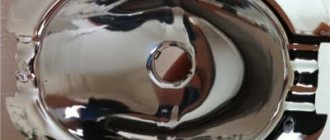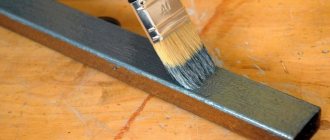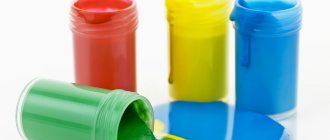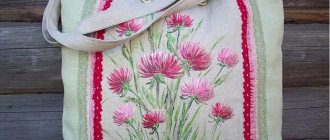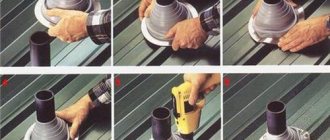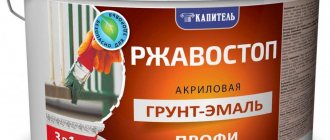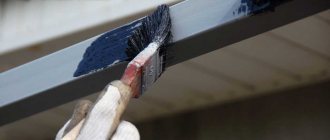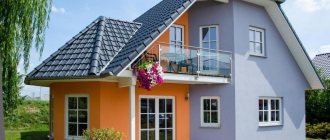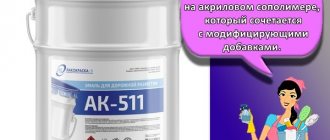Unpainted metal surfaces do not always look beautiful. To improve their appearance, you can use different types of enamels. For products exposed to extreme heat, it is better to use heat-resistant paint for metal. After applying the enamel, a durable film is formed on the surfaces, which will protect the surfaces from exposure to high temperatures.
Painting tools (Photo: pixabay.com)
Classification of paints for fireplaces and stoves
So, the first type is fireproof. It is necessary to note one subtlety associated with this material. Its purpose is to cover metal surfaces that are constantly or temporarily in contact with fire. That is why the operating temperature of such paint is up to 1800 °C.
Therefore, industrial-type equipment or units are painted with it. That is, this paint and varnish material did not find its use in everyday life. Of course, the point here is not only that the temperature in home ovens is much lower. It’s just that such paint is an expensive material.
But heat-resistant, also known as heat-resistant paint, has found its application in everyday life. It is used to paint metal stoves or metal parts of fireplaces and brick stoves. For example, doors and grilles. Depending on the type, these paints can withstand temperatures ranging from 600-1000 °C.
If you need to paint a brick or concrete stove, then it is better to use the third type - heat-resistant paint. It can withstand temperatures well, but not higher than +400 °C. Therefore, it is used to treat the walls of stoves and chimneys.
Heat-resistant enamel for painting stoves Source diy.obi.ru
Areas of application
Heat-resistant paint is used in the manufacture of:
- industrial equipment;
- parts for cars, planes, ships;
- barbecues, barbecues, metal stoves;
- batteries, modern heating radiators.
Also, such enamel can be used when painting hot water supply and heating pipelines.
To make your own barbecue or stove, it is better to purchase consumables from a direct manufacturer. If you need to buy stainless steel in St. Petersburg, you can contact. The products of this company undergo all necessary tests and mandatory certification, which proves the high quality of the finished material.
Requirements for paints
Primarily, these compositions were made to decorate heating surfaces. But at the same time, the heating devices and units themselves do not lose their technical and operational characteristics. Therefore, there are special requirements for paint and varnish products of this type. Namely:
- High security . That is, during the heating process, the painted surface should not release substances harmful to humans into the air.
- Thermal conductivity . The paint layer applied to the stove or fireplace should not interfere with the release of heat into the room. That is, the heat exchange between the stove and the air inside the rooms must be sufficient.
- High elasticity of the material . It would be easier to say this: the paint applied to the surface of the stoves should not crack during operation. Especially with temperature changes.
- The material should easily withstand the negative effects of household chemicals . That is, so that painted stoves and fireplaces can be easily washed and cleaned using various detergents. In this case, the surfaces must withstand repeated cleaning.
- Covering power . This indicator should guarantee even application of paint to the surface. It is optimal if there are no more than three layers.
Good hiding power of heat-resistant paints Source orchardo.ru
See also: Catalog of companies that specialize in paints and varnishes and related work
Kinds
Based on their composition, polyurethane coatings can be divided into two groups:
- two-component products that require mixing, since each component is produced in a separate container;
- one-component paints that do not require mixing - they can be used immediately after purchasing and preparing the surface, since all the main components are already present in the product.
One of the cans of a two-component composition contains a hardener, the second contains resin. This variety is much stronger and is more resistant to external negative factors affecting the surface. The product sets without the participation of water vapor from the air, which greatly expands the range of use of the product.
Classification of one-component paints by type of base
To classify one-component paints, they can be divided into three categories:
- products based on organic compounds;
- alkyd-urethane products;
- water-dispersed suspensions.
The composition of polyurethane compounds of the first category, in addition to the main elements, includes xylene or toluene. To dilute such materials, specialized solvents are produced. The product achieves a solid state due to the reaction of the components with moisture from the air. Therefore, the time required for this type of paint to completely dry will depend on the level of air humidity in the room.
The second type contains alkyd-urethane varnish. A distinctive feature of this paint is its very short drying time, usually one and a half hours. White spirit is additionally purchased as a solvent for alkyd-urethane products.
The latter type has a similar name due to the solvent that is used for this product - during the work you will need ordinary water. Water-dispersion paints are odorless and harmless to humans; when painting a surface with such a composition, there is no need to use additional protective equipment. They set due to the moisture contained in the air.
Powder and epoxy-polyurethane paints
We can distinguish another type of polyurethane products for painting - powder compositions. They are produced in the form of a homogenized mixture, the components of which are: pigments, hardener, polyester resin and filler.
This type belongs to thermosetting dyes. They process the product or base, after which they are subjected to heat treatment, resulting in a reaction between the components that fuse with each other. The result of such work is a durable and hard coating. That is why powder compositions are most often used for work in mechanical engineering.
Epoxy-polyurethane paint is highly resistant, therefore it is used in industry for treating various types of structures that come into contact with aggressive environments, to provide them with a good level of protection.
Classification by method of application
Also, polyurethane compositions can be divided into groups according to the method of application to the surface:
- aerosol products;
- paint that must be applied with a roller or brush.
The first group of coatings is used for metal products and surfaces. Automotive polyurethane paint in cans forms a uniform coating that is completely free of smudges and streaks.
Types of heat-resistant paints
The range of paints for stoves that domestic and foreign companies offer today is huge. It will satisfy the requirements of even the most capricious buyer. This is especially true for the color palette. That is, in this regard there are practically no restrictions.
As for the types, they are divided depending on the components. Essentially, like any other paint and varnish product. Next, we will consider the classification of heat-resistant paints for brick stoves.
Wide color palette Source uastal.com
Silicon organic
Typically, such paints are used to cover building facades. And they are based on organic resins. But recently, manufacturers have begun to produce heat-resistant analogues for painting stoves and fireplaces. Please note that on containers of such material you can often see the inscription - moderately heat-resistant. They cannot be used for painting heating devices, because such material can withstand temperatures of no more than +100 °C.
Note that today silicon and organic compounds are increasingly being used for finishing heating devices. Firstly, this is the cheapest paint material of all those offered. Secondly, it has excellent characteristics. For example, here are the advantages of this paint:
- excellent heat resistance;
- high elasticity;
- good strength of the film that forms on the brick surface;
- excellent moisture resistance, which makes it possible to use paint to coat sauna stoves;
- excellent adhesion, allowing the material to be applied not only to brickwork, but also to plaster and concrete.
Silicon organic composition for coating the surfaces of stoves and fireplaces Source gidpokraske.ru
Characteristics
Enamel (paint) with heat resistance must meet the following reliability characteristics:
- electrical insulation protection;
- high abrasion resistance;
- immunity to sudden changes in temperature;
- corrosion protection;
- strength, but ductility;
- environmental friendliness;
- increased adhesion;
- ease of processing;
- chemical and physical inertness, including to technical oils and gasoline.
You can buy enamel or paint with such properties in a specialized paint and varnish store. But it is also possible to make a special heat-resistant coloring solution with your own hands. How to achieve this? What substances should I use?
Metal paints
Let’s immediately make a reservation that heat-resistant paint for metal stoves is not used for painting brick. But their classification is exactly the same. And they are made on the basis of the above compositions. True, there are other varieties:
- epoxy , which can be used for painting metal products heated to +200 °C;
- single-component ethyl silicate and epoxy ester , withstand temperatures up to +400 °C;
- silicone one-component – withstands up to +650 °C;
- compositions to which liquid glass or composite materials are added , they can withstand temperatures up to +1000 °C.
Heat-resistant silicone paint, black Source gdematerial.ru
Popular manufacturers
Well-known brands on the heat-resistant paint market include:
- Certa is a Russian company offering a wide selection of enamels. The maximum heating temperature for most mixtures is +900 ° C.
- Elcon has been known on the market since 1998. Enamels are produced that can withstand not only heat, but also severe frosts.
- Termal is a Finnish company. Produces alkyd mixtures for use in saunas and baths.
Rules for applying paint
There are no special requirements for painting bricks and metal. With brick surfaces everything is quite simple. They are dusted off and painted using either a brush, a roller, or a spray gun. It is better to use the first two tools; the layer of applied material will be thicker and, accordingly, stronger.
As for metal furnaces, manufacturers offer paints that do not require preliminary preparation of the metal. But for some varieties, preparation is still needed. Namely:
- rust is removed, if any;
- the metal surface is cleaned from dirt;
- degreasing is carried out using a solvent: gasoline, white spirit, etc.
As for the painting process itself, in some cases one layer is enough. If they fail to paint well, then apply a second layer. Only it is applied in a perpendicular direction relative to the first one.
Attention! Before painting, it is recommended to study the instructions for use from the manufacturer. Here you will find useful information about the temperature at which the paint should be applied, in what conditions the painted product should dry, how much time should be left between applying layers of material, and so on.
Packaging
You can purchase heat-resistant paints in various packaging - these can be spray cans or jars. From cans, paint is simply sprayed over the surface, and from a can, paint is used with brushes, rollers or special sprayers.
The volume of the cylinder is usually 500 ml. Cans are produced in 400 g, 800 g, 2.5 kg and 5 kg. There are also large buckets of 5-15 kg and barrels.
Exactly how to apply thermal paint is everyone’s personal choice. For some, it will be more convenient to use a brush or roller, while others will opt for a spray can. In the latter case, the material consumption will be significantly lower, and the paint will apply more evenly and evenly.
Briefly about the main thing
Heat-resistant paints on metal for stoves or on brick are compositions that not only withstand high temperatures, but also have high mechanical strength and moisture resistance.
The classification of paints of this type divides them into three types: fire-resistant, heat-resistant and heat-resistant. It all depends on the temperatures they can withstand.
In addition to paints, manufacturers offer heat-resistant colorless varnish for painting bricks.
The application method is exactly the same as for conventional paints and varnishes.
Ratings 0
Do-it-yourself thermal paint, can it be done and how?
You can make heat-resistant paint yourself. The best option would be to prepare it from liquid glass and aluminum powder. The main thing is to understand that after the first fire, strong smoke may appear; the shelf life of such a coating is up to five years.
You can also use heat-resistant varnish; aluminum powder is added to it to obtain the desired effect. This option can withstand up to 350 degrees, and receives an anti-corrosion coating. Making paints is not difficult, the main thing is to get the necessary ingredients.
You can use heat-resistant varnish; aluminum powder is added to it to obtain the desired effect.
Coloring stages
The painting procedure includes the following steps:
Clean the surface of the stove using sandpaper or a stiff brush. This will allow the paint to adhere better. If rust is present, treat with a 5% sulfuric acid solution. When processing, you should protect your hands with gloves, and use a brush for application. Remaining acid should be washed off with a soap solution (50 g of laundry soap per liter of water). If there is no rust, you can skip this step. Apply a degreasing agent (solvent, white spirit) or simply wash the oven with soap and let it dry thoroughly. Heat-resistant paint is applied using a spray or brush. For greater stability, apply two or three layers, drying completely each time.
It doesn’t matter what material the stove is made of, iron, steel or cast iron, the process is the same. Before working with the aerosol, shake the can for a minute, after which you proceed to spraying
The mixture to be painted is applied from a distance of 20-30 cm to make a thin layer.
Can or spray can - what to choose
Heat-resistant paints are produced in the following packaging:
- aerosols (sprays) in 400-500 ml cans (very convenient to apply by spray);
- liquid paint, packaged in cans from 1 kg, in buckets of 20, 25 and 30 kg and in drums from 40 kg.
Aerosol paint is available in spray cans.
Advantages of aerosol paints:
- When painting, it is evenly distributed over the surface.
- Spray cans are convenient for working in hard-to-reach places.
- The paint does not need to be diluted and there is no need to wash the tools after work.
- The cans are easy to use and can be painted by a person even without painting experience.
- Aerosol paint will never thicken, so you can reuse it even after a long time.
Paint packaged in buckets and jars quickly thickens and becomes covered with a film, so it cannot be stored for a long time. But if you need to paint a large surface, buying a can is the preferable option.
The most common heat-resistant paints are black and silver. But there are any other color options. They are usually a little more expensive.
A stove painted in a dark color will warm up faster than a light one, so if heating speed is a factor for you, use dark paint, if possible matte, as it transfers heat better. But if you want a beautiful, cheerful and shiny fireplace, feel free to paint it in red gloss - it will also be good!
How else to protect a metal grill from rust?
A procedure such as oxidation or bluing can also protect a metal product. It is performed in factories; it is not easy to carry out a similar procedure at home. You can really do this with your own hands only with collapsible structures.
First, all parts are immersed in a 5% sulfuric acid solution for 5 minutes. After this, an aqueous solution with soap shavings is prepared, in which the parts are boiled for 10–15 minutes. After this treatment, the parts are not wiped or dried. They are treated with caustic soda (caustic soda) heated to 100°C. The grill should be kept in the solution for at least 2 hours. The parts can then be removed and allowed to dry.
After this treatment, a strong film is formed on the grill, thanks to which it will no longer burn. There is no risk of rust for the oxidized product. True, this method requires a lot of effort, so it is much easier to paint the product.
Thus, by choosing one paint or another, you can significantly improve the appearance of your favorite cooking product. I recommend watching the following video to take into account the experience of those who have already done this.
